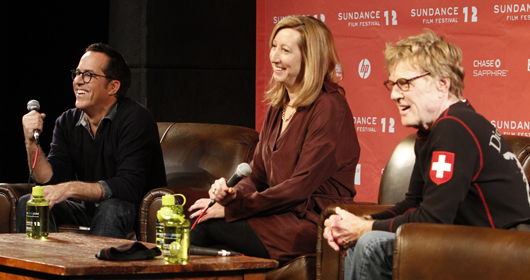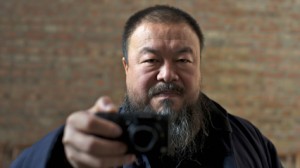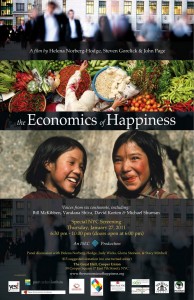Search results for fair trade (99)

Celebrate the 2012 Sundance Film Festival From Anywhere
http://www.sundance.org/festival
http://www.sundance.org/stories/blog
http://www.sundance.org/programs/native-film
“Storytellers broaden our minds: engage, provoke, inspire, and ultimately, connect us.”
—Robert Redford, President and Founder
The Sundance Film Festival is a film festival that takes place annually in Utah, in the United States. It is the largest independent cinema festival in the United States. HERE
Charity biography #433 Robert Redford has addressed environmental issues in documentaries and film for over 30 years. Read more: http://www.looktothestars.org/celebrity/443-robert-redford
Sundance Institute is a nonprofit organization dedicated to the discovery and development of independent artists and audiences. Through its programs, the Institute seeks to discover, support, and inspire independent film and theatre artists from the United States and around the world, and to introduce audiences to their new work.
Since 1981, Sundance Institute has evolved to become an internationally-recognized nonprofit organization that actively advances the work of risk-taking storytellers worldwide. Originally founded by Robert Redford in the mountains of Sundance, Utah, Sundance Institute has always provided a space for independent artists to explore their stories free from commercial and political pressures. By providing year-round creative and financial support for the development of original stories for the screen and stage, Sundance Institute remains committed to its mission to discover and develop independent artists and audiences across the globe.
#VIDEO 2012 Festival Kickoff http://www.youtube.com/sff
Sundance Film Festival Director John Cooper, and Director of Programming Trevor Groth, share some of the great things about to happen at the 2012 Sundance Film Festival.
Artist Programs
http://www.sundance.org/programs/
Through year-round support, including a series of Labs and Fellowships for screenwriters, directors, documentarians, producers, composers, and theatre artists, the Institute’s artist programs have supported more than 5,000 artists and their films.
Feature Film
The longest-running of Sundance Institute’s artist development programs, the Feature Film Program (FFP) was founded in 1981 and has since supported more than 500 independent filmmakers whose distinctive, singular films have engaged audiences worldwide. We hope to embrace the unique vision of each filmmaker we support and encourage a rigorous creative process with a focus on original storytelling. Led by Michelle Satter, each year the Program advances the work of as many as 65 emerging filmmakers from the U.S. and around the world through a year-round continuum of support from development, to production and postproduction, all the way through to festival strategy and creative marketing/distribution.
#video http://www.aiweiweineversorry.com
http://filmguide.sundance.org/ai_weiwei_never_sorry
Ai Weiwei is China’s most famous international artist, and its most outspoken domestic critic. Against a backdrop of strict censorship and an unresponsive legal system, Ai expresses himself and organizes people through art and social media. In response, Chinese authorities have shut down his blog, beat him up, bulldozed his newly built studio, and held him in secret detention.
AI WEIWEI: NEVER SORRY is the inside story of a dissident for the digital age who inspires global audiences and blurs the boundaries of art and politics. First-time director Alison Klayman gained unprecedented access to Ai while working as a journalist in China. Her detailed portrait provides a nuanced exploration of contemporary China and one of its most compelling public figures.
http://www.financialtaskforce.org/2011/12/07/an-artists-stand
Ai Weiwei is known for many things—great architecture, subversive in-your-face art, and political activism. He has also called for greater transparency on the part of the Chinese state. Director Alison Klayman chronicles the complexities of Ai’s life for three years, beginning with his rise to public prominence via blog and Twitter after he questioned the deaths of more than 5,000 students in the 2008 Sichuan earthquake. The record continues through his widely publicized arrest in Beijing in April of 2011. As Ai prepares various works of art for major international exhibitions, his activism heats up, and his run-ins with China’s authorities become more and more frequent.
In this unprecedented look at Ai and those close to him, Klayman’s camera captures his forthrightness and unequivocal stance. She gives a larger picture of the artist as an individual, a symbol of China’s oppression, and a powerful voice against a country that still denies its citizens many basic freedoms. – K.Y.
http://www.sundance.org/filmforward/destinations
http://www.sundance.org/filmforward/destination/china-2012/
Sundance Spotlights Spacey’s Wall Street Boss,
Al Pacino’s Cop
http://www.bloomberg.com/news/2012-01-17/austerity-wrong-way-to-fight-eu-crisis-stiglitz.html
Two movies about the *financial crisis — a drama starring Kevin Spacey and a documentary featuring Nobel Prize-winner Joseph Stiglitz — will be showcased at the Sundance Film Festival opening today in Utah.
On China, Stiglitz said an easing in its economic expansion to 7 percent to 8 percent is in some sense probably a “good thing.” He later told reporters at a Hong Kong briefing growth in the world’s second-largest economy is now more “sustainable.”
http://genevalunch.com/blog/2011/11/29/swiss-chinese-free-trade-good-progress-made
http://en.wikipedia.org/wiki/List_of_bilateral_free_trade_agreements
Not to be confused with Free market or Fair Trade. http://en.wikipedia.org/wiki/Free_trade
In “Margin Call,” Spacey plays an executive at a troubled Wall Street investment firm during the early days of the economic meltdown. “The Flaw,” directed by British filmmaker David Sington, explores the causes of the crisis through interviews with leading economists, Wall Street insiders and victims of the Great Recession.
Celebrate the 2012 Sundance Film Festival From Anywhere
Digital Initiatives Bring the Festival to You!
Livestream Events │ Exclusive Online Content │Social Media
We’re working to improve your experience on our site. Please click to offer your feedback.
http://www.sundance.org/video/live/ LIVE Streaming
http://www.facebook.com/sundance
http://twitter.com/sundancefest
The Economics of Happiness
www.theeconomicsofhappiness.org
www.otherworldsarepossible.org
Fair trade is an organized social movement and market-based approach that aims to help producers in developing countries make better trading conditions and promote sustainability. The movement advocates the payment of a higher price to producers as well as higher social and environmental standards. More
‚Going local‘ is a powerful strategy to help repair our fractured world – our ecosystems, our societies and our selves. Far from the old institutions of power, people are starting to forge a very different future…
Economic globalization has led to a massive expansion in the scale and power of big business and banking. It has also worsened nearly every problem we face: fundamentalism and ethnic conflict; climate chaos and species extinction; financial instability and unemployment. There are personal costs too. For the majority of people on the planet, life is becoming increasingly stressful. We have less time for friends and family and we face mounting pressures at work.
The Economics of Happiness describes a world moving simultaneously in two opposing directions. On the one hand, an unholy alliance of governments and big business continues to promote globalization and the consolidation of corporate power. At the same time, people all over the world are resisting those policies, demanding a re-regulation of trade and finance—and, far from the old institutions of power, they’re starting to forge a very different future. Communities are coming together to re-build more human scale, ecological economies based on a new paradigm – an economics of localization.
www.energyblueprint.info The report: ‘Energy [R]evolution: A Sustainable World Energy Outlook’, provides a detailed practical blueprint for cutting carbon emissions while achieving economic growth by replacing fossil fuels with renewable energy and energy efficiency. This phase-out of fossil fuels offers substantial benefits such as energy security, independence from world market fuel prices as well as the creation of millions of new green jobs.
The film shows how globalization breeds cultural self-rejection, competition and divisiveness; how it structurally promotes the growth of slums and urban sprawl; how it is decimating democracy.
We learn about the obscene waste that results from trade for the sake of trade: apples sent from the UK to South Africa to be washed and waxed, then shipped back to British supermarkets; tuna caught off the coast of America, flown to Japan to be processed, then flown back to the US. We hear about the suicides of Indian farmers; about the demise of land-based cultures in every corner of the world.
The second half of The Economics of Happiness provides not only inspiration, but practical solutions. Arguing that economic localization is a strategic solution multiplier that can solve our most serious problems, the film spells out the policy changes needed to enable local businesses to survive and prosper. We are introduced to community initiatives that are moving the localization agenda forward, including urban gardens in Detroit, Michigan and the Transition Town movement in Totnes, UK. We see the benefits of an expanding local food movement that is restoring biological diversity, communities and local economies worldwide. And we are introduced to Via Campesina, the largest social movement in the world, with more than 400 million members.
We hear from a chorus of voices from six continents, including Vandana Shiva, Bill McKibben, David Korten, Samdhong Rinpoche, Helena Norberg-Hodge, Michael Shuman, Zac Goldsmith and Keibo Oiwa. They tell us that climate change and peak oil give us little choice: we need to localize, to bring the economy home. The good news is that as we move in this direction we will begin not only to heal the earth but also to restore our own sense of well-being. The Economics of Happiness challenges us to restore our faith in humanity, challenges us to believe that it is possible to build a better world.
Casino of Hunger: How Wall Street Speculators Fueled the Global Food Crisis
The global food crisis is an overlooked symptom of the broader global economic crisis. The food crisis shares many characteristics of the financial meltdown ‚ it was exacerbated by the deregulation of the commodity markets (including agriculture) that encouraged a tidal wave of Wall Street speculation‚ leading to further increases in already rising food and energy prices.
Over the past two decades, the safeguards that prevented excessive speculation from distorting the futures markets were eroded or eliminated.
http://www.foodandwaterwatch.org/reports/casino-of-hunger
www.oaklandinstitute.org/trade watch
www.ifg.org Int. Forum on Globalization
http://donttradeourlivesaway.wordpress.com
www.attac.org International Movement
Meet Economy of Happiness at fb
Meet Gross National Happiness American Project at fb
MeetUnited for a Fair Economy at fb
Climate Change, Food Sovereignty & Security
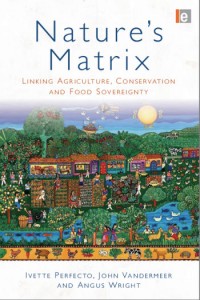
www.oneclimate.net Food security refers to the availability of food and one’s access to it. A household is considered food-secure when its occupants do not live in hunger or fear of starvation. According to the World Resources Institute, global per capita food production has been increasing substantially for the past several decades. In 2006, MSNBC reported that globally, the number of people who are overweight has surpassed the number who are undernourished – the world had more than one billion people who were overweight, and an estimated 800 million who were undernourished. According to a 2004 article from the BBC, China, the world’s most populous country, is suffering from an obesity epidemic. In India, the second-most populous country in the world, 30 million people have been added to the ranks of the hungry since the mid-1990s and 46% of children are underweight.
www.1billionhungry.org Worldwide around 852 million people are chronically hungry due to extreme poverty, while up to 2 billion people lack food security intermittently due to varying degrees of poverty (source: FAO, 2003). Six million children die of hunger every year – 17,000 every day. As of late 2007, export restrictions and panic buying, US Dollar Depreciation,increased farming for use in biofuelsworld oil prices at more than $100 a barrel, global population growth,climate change,loss of agricultural land to residential and industrial development,and growing consumer demand in China and Indiaare claimed to have pushed up the price of grain. However, Nonetheless, food riots have recently taken place in many countries across the world. Read More: > HERE <
As the Nobel Prize-winning economist Amartya Sen has observed that „there is no such thing as an apolitical food problem.“ While drought and other naturally occurring events may trigger famine conditions, it is government action or inaction that determines its severity, and often even whether or not a famine will occur. The 20th century is full of examples of governments undermining the food security of their own nations–sometimes intentionally.
There are many economic approaches advocated to improve food security in developing countries. Three typical approaches are listed below, click here . The first is typical of what is advocated by most governments and international agencies. The other two are more common to non-governmental organizations (NGO’s).
The third approach is known as food sovereignty; though it overlaps with food justice on several points, the two are not identical. It views the business practices of multinational corporations as a form of neocolonialism click here.
It contends that multinational corporations have the financial resources available to buy up the agricultural resources of impoverished nations, particularly in the tropics. They also have the political clout to convert these resources to the exclusive production of cash crops click here ,for sale to industrialized nations outside of the tropics, and in the process to squeeze the poor off of the more productive lands. Under this view subsistence farmers are left to cultivate only lands that are so marginal in terms of productivity as to be of no interest to the multinational corporations. Likewise, food sovereignty holds it to be true that communities should be able to define their own means of production and that food is a basic human right.
With several multinational corporations now pushing agricultural technologies on developing countries, technologies that include improved seeds, chemical fertilizers, and pesticides, crop production has become an increasingly analyzed and debated issue. Many communities calling for food sovereignty are protesting the imposition of Western technologies on to their indigenous systems and agency.
Those who hold a „food sovereignty“ position advocate banning the production of most cash crops in developing nations, thereby leaving the local farmers to concentrate on subsistence agriculture. In addition, they oppose allowing low-cost subsidized food from industrialized nations into developing countries, what is referred to as „import dumping“. Import dumping also happens by way of food aid distribution through programs like the USA’s „Food for Peace“ initiative.
www.fao.org , www.vandanashiva.org Vandana Shiva (Hindi: वन्दना शिवा; b. November 5, 1952, Dehra Dun, Uttarakhand, India), is a philosopher, environmental activist, eco feminist and author of several books. Shiva, currently based in Delhi, is author of over 300 papers in leading scientific and technical journals. She received her Ph.D. in philosophy from the University of Western Ontario, Canada, in 1978 with the doctoral dissertation:“Hidden variables and locality in quantum theory. Read More: > HERE < , Food Commodities Speculation and Food Price Crises http://www.srfood.org
Food Security Guide – Over one billion people experience the hardship that hunger imposes, a figure which continues to rise even amidst the riches of the 21st century. Engulfed within a vortex of population growth, economic instability and climate change, food security has become an urgent challenge for national and global governance. However, the feeble outcome of the 2009 World Summit on Food Security suggests that the richer countries are not yet ready to reorganise their dysfunctional priorities. http://uk.oneworld.net/guides/food
WASHINGTON (MarketWatch) — Those of us who believe that the economy should serve us instead of the other way around are conflicted. We know that the only way to end unemployment at home and poverty around the world is to make the economy grow faster. But we also know that nothing can grow forever, that the faster the global economy grows, the sooner we’ll run out of essential resources, including fossil fuels, water, arable land, healthy ecosystems and moderate climate. Economists and politicians can’t admit it, but the laws of physics apply, no matter what the latest polls tell us. The Earth has finite resources that will someday limit our economic growth.
The Earth cannot forever support 7 billion people consuming as much as Americans consume. And yet we’ve staked our future — individually, nationally, and maybe even as a species — on that impossible dream.
SOLUTIONS – Prosperity Without Growth, Professor Tim Jackson: Growth has delivered its benefits, at best, unequally. A fifth of the world’s population earns just 2% of global income. Inequality is higher in the OECD nations than it was 20 years ago. And while the rich got richer, middle-class incomes in Western countries were stagnant in real terms long before the recession. Far from raising the living standard for those who most needed it, growth let much of the world’s population down. Wealth trickled up to the lucky few.
Accordingly, this report sets out a critical examination of the relationship between prosperity and growth. It acknowledges at the outset that poorer nations stand in urgent need of economic development. But it also questions whether ever-rising incomes for the already-rich are an appropriate goal for policy in a world constrained by ecological limits. Its aim is not just to analyse the dynamics of an emerging ecological crisis that is likely to dwarf the existing economic crisis. But also to put forward coherent policy proposals that will facilitate the transition to a sustainable economy. In short, this report challenges the assumption of continued economic expansion in rich countries and asks: is it possible to achieve prosperity without growth?
In short, a ‘green stimulus’ is an eminently sensible response to the economic crisis. It offers jobs and economic recovery in the short term, energy security and technological innovation in the medium term, and a sustainable future for our children in the long term. Nonetheless, the default assumption of even the ‘greenest’ Keynesian stimulus is to return the economy to a condition of continuing consumption growth. Since this condition is unsustainable, it is difficult to escape the conclusion that in the longer term something more is needed. A different kind of macro-economic structure is essential for an ecologically-constrained world.
The above is an excerpt www.ecobuddhism.org : The full report can be downloaded here .
Available in PDF: New briefing: Food safety for whom? Corporate wealth versus people’s health by GRAIN, May 2011, further informations: www.corpwatch.org
A new briefing by GRAIN examines how „food safety“ is being used as a tool to increase corporate control over food and agriculture, and discusses what people can do and are doing about it. Below is a snapshot of what’s inside. The full briefing is available here.
View some additional photos here.
Bahá’í – Religion für eine neue Zeit
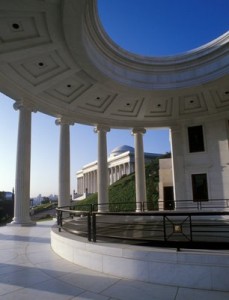
The Bahá’í Faith is a monotheistic religion founded by Bahá’u’lláh (see also Aposteles of Bahá’u’lláh) nineteenth-century Persia, emphasizing the spiritual unity of all humankind. There are an estimated five to six million Bahá’ís around the world in more than 200 countries and territories. In the Bahá’í Faith, religious history is seen to have unfolded through a series of divine messengers, each of whom established a religion that was suited to the needs of the time and the capacity of the people. These messengers have included Abraham, the Buddha, Jesus, Muhammad and others, and most recently the Báb ( ~ John the Baptist/Mandeism) and Bahá’u’lláh. In Bahá’í belief, each consecutive messenger prophesied of messengers to follow, and Bahá’u’lláh’s life and teachings fulfilled the end-time promises of previous scriptures. Humanity is understood to be in a process of collective evolution, and the need of the present time is for the gradual establishment of peace, justice and unity on a global scale. Read More: > HERE <
The persecution of Bahá’ís is the religious persecution of Bahá’ís in various countries, especially in Iran,where the Bahá’í Faith originated and the location of one of the largest Bahá’í populations in the world. The origins of persecution stem from a variety of Bahá’í teachings that challenge traditional Islamic belief, including the finality of Muhammad’s prophethood, and places Bahá’ís outside the Islamic faith. Thus Bahá’ís are seen as apostates from Islam, and, according to some, must choose between repentance and death.
Bahá’ís as well as the United Nations, Amnesty International, the European Union, the United States and peer-reviewed academic literature have stated that the members of the Bahá’í community in Iran have been subjected to unwarranted arrests, false imprisonment, beatings, torture, unjustified executions, confiscation and destruction of property owned by individuals and the Bahá’í community, denial of employment, denial of government benefits, denial of civil rights and liberties, and denial of access to higher education. Read More: > HERE <
Iran (i /ɪˈrɑːn/ or /ɪˈræn/; Persian: ایران;), officially the Islamic Republic of Iran is a country in Central Eurasia and Western Asia. It is a country of particular geostrategic significance owing to its location in the Middle East and central Eurasia. Iran is a regional power,and holds an important position in international energy security and world economy as a result of its large reserves of petroleum and natural gas. Iran is a founding member of the UN, NAM, OIC and OPEC. Read More: >HERE<
Belief and practice –Bahá’í teachings focus on unity – the oneness of God, the oneness of religion, and the oneness of the human race. A central belief is progressive revelation – that God progressively reveals His teachings for humanity through a series of divine educators that become the founders of the world’s great religions. Among these religions are the Bahá’í Faith, Buddhism, Christianity, Hinduism, Islam, Judaism, and Zoroastrianism.
The founder of the Bahá’í Faith was Bahá’u’lláh, who wrote the equivalent of a hundred volumes and laid down principles for a new pattern of human society. Some of these principles are: the independent investigation of truth by each person, the elimination of extremes of wealth and poverty, a spiritual solution to economic problems, the unity of all peoples and the elimination of prejudice, the equality of women and men, the harmony of science and religion, universal education, the establishment of a universal auxiliary language. All Information click here
International artists and religious leaders come together to call for human rights and religious freedom in Iran. Belief Behind Bars (Part 1 of 19)
TV-TIPP: Bahai – Religion für eine neue Zeit (ORF/3sat) – Israel ist das Heilige Land der drei großen Offenbarungsreligionen: des Judentum, des Christentum und des Islam. Doch Israel ist auch das Heilige Land einer vierten – noch nicht so bekannten – Weltreligion: der Baha’i.Wieso entscheiden sich Österreicher, wie die Familie Penz aus Hall in Tirol dazu, sich dieser neuen Religion anzuschließen? Der 45-jährige Andreas Penz bringt es auf den Punkt: „Weil ich zum ersten Mal von einer Einheit der Menschheit und der Einheit der Religionen gehört habe – das war für mich wie ein Blitzlicht.“
Für die Dokumentation „Baha’i – Religion für eine neue Zeit“ besuchte Regisseurin Pia Patricia Schweizer Familie Penz in Tirol und erkundete gemeinsam mit der 22-jährigen Tochter Marina die „Magie“ der heiligen Stätten der Baha’i in Israel. In Haifa befindet sich das geistige und administrative Zentrum dieser jüngsten Weltreligion. Sie glauben an den einen Gott, haben ihre eigenen Heiligen Schriften und einen Religionsstifter mit dem Namen Baha’u’llah. Weltweit bekennen sich etwa sechs Millionen Menschen zu diesem Glauben. Die 22-jährige Tochter der Familie Penz, Marina, ist Baha’i und hat sich entschieden, ein „Freiwilliges Soziales Jahr“ in Haifa zu machen.
Die „Hängenden“ oder die „Persischen Gärten“ der Baha’i sind eine perfekte Komposition aus Architektur und Natur. Die neunzehn Terrassen auf dem Berg Karmel wurden gemeinsam mit dem Mausoleum des Bab 2008 von der UNESCO zum Weltkulturerbe erklärt. Seit der Eröffnung der Terrassen im Jahr 2001 wurden sie von zwei Millionen Menschen besucht; an manchen Tagen kommen bis zu 3000 Besucher. Die 1953 erbaute goldene Kuppel des Mausoleums, die von den Baha’i „Königin des Karmel“ genannt wird, ist das Wahrzeichen der Stadt Haifa.
Größte religiöse Minderheit im Iran – Bis heute werden Baha’i im Land ihrer Entstehung, im Iran, verfolgt. Sie sind die größte religiöse Minderheit, genießen aber keinerlei Schutz wie Juden oder Christen. Die Vereinten Nationen und die Europäische Union äußerten sich wiederholt besorgt über die Unterdrückung der Baha’í. So wird der Iran in einer UNO-Resolution vom 21. Dezember 2010 erneut wegen schwerer Menschenrechtsverletzungen und der Diskriminierung von Bahá’í scharf verurteilt.
Marinas Eltern in Tirol sind vor neun Jahren Baha’i geworden. Sie lieben die Berge ihrer Heimat, sind Mitglieder des örtlichen Radlerclubs und spielen Theater. Das Einzige, was sie von ihrem überwiegend katholischen Umfeld unterscheidet, ist ihre Religion. „Es war für mich immer klar, dass es eine höhere Macht gibt, dass es einen Gott gibt, und als ich dann die Baha’i-Religion kennengelernt habe, haben sich für mich sehr viele Fragen beantwortet. Es hat mein Leben von der inneren Einstellung wesentlich geändert, alles ist viel größer geworden – und man hat auf einmal vom eigenen Leben über die Landesgrenzen hinaus geschaut.“, sagt Andreas Penz rückblickend. Eine Konsequenz des Baha’i-Glaubens ist ein entschiedenes soziales Engagement.
Haleh Arbab, Vertreterin der Internationalen Baha’i-Gemeinde in Haifa: „Bei unserer Religion geht es hauptsächlich um die geistige Wandlung des Einzelnen und auch um die gesellschaftliche Neugestaltung – es ist eine Religion, für die beides wichtig ist….Wir als Baha’i entwickeln uns zu geistigen Menschen, indem wir die Heiligen Schriften lesen, meditieren, an uns selbst arbeiten, aber auch, indem wir für die Gesellschaft tätig sind – und das vor allem durch den Dienst an Anderen.“ In über 900 großangelegten, nachhaltigen sozialen und wirtschaftlichen Entwicklungsprojekten in aller Welt, darunter auch 500 Schulen, soll das umgesetzt werden.
Es gibt nicht nur die „eine Wahrheit“ – Die Baha’i sind davon überzeugt, in ihrer Religion den Kern und die Sehnsucht aller Religionen vereint zu haben. Sie verstehen sich als Fortsetzung der bereits vorhandenen Religionen. Vielleicht auch als deren Erfüllung. Und sie glauben, dass die göttliche Offenbarung weitergehen wird. Die „eine Wahrheit“ gibt es für sie nicht. Die Aufgabe des Menschen ist es, weiter zu lernen und sich verantwortlich für die Zukunft der Menschheit einzusetzen. Und so arbeiten sie alle für Baha’u’llahs Versprechen: „Die Erde ist nur ein Land, und alle Menschen sind seine Bürger.“ > Sendedaten: Montag, 31. Jänner 2011 um 22.25 Uhr Wiederholungen (3sat)
„Rechte der Baha’i im Iran schützen“ Außenminister Dr.Spindelegger appelliert an den Iran
A Voice from Prison – Farsi Poem
- Meet MDGs We Can End Poverty, friends, fans at fb
- Meet FAIR TRADE, friends, fans at fb < & www.ethicalconsumer.org
- Meet World Ressource Institute, studies, friends, fans at fb
- Meet UN Educational, Scientific & Cultural Organization (UNESCO) at fb
- Meet Alternative Energy News, studies , friends fans at fb
- Meet The Oil Drum, studies, friends, fans at fb
- Meet Council for a Parliament of the World’s Religions (CPWR) at fb
- Peace, Paix, 和平, Salam, Shalom, Pace, Mir, Friede, Paz, Shanti, Heiwa …
Africa – Green Agriculture & Climate Change
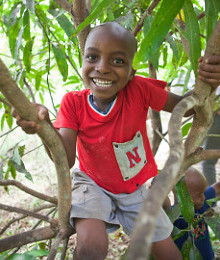
http://kofiannanfoundation.org
Sustainable agriculture is the practice of farming using principles of ecology, the study of relationships between organisms and their environment. It has been defined as „an integrated system of plant and animal production practices having a site-specific application that will, over the long term:Satisfy human food and fiber needs Make the most efficient use of non-renewable resources and on-farm resources and integrate, where appropriate, natural biological cycles and controls Sustain the economic viability of farm operations Enhance the quality of life for farmers and society as a whole. Read More: > Here <
Fair trade is an organized social movement and market-based approach that aims to help producers in developing countries make better trading conditions and promote sustainability. The movement advocates the payment of a higher price to producers as well as social and environmental standards. It focuses in particular on exports from developing countries to developed countries, most notably handicrafts, coffee, cocoa, sugar, tea, bananas, honey, cotton, wine, fresh fruit, chocolate, flowers and gold. Read More: > HERE <
AGRA ALLIANCE works to achieve a food secure and prosperous Africa through the promotion of rapid, sustainable agricultural growth based on smallholder farmers. Smallholders–the majority women–produce most of Africa’s food, and do so with minimal resources and little government support. AGRA aims to ensure that smallholders have what they need to succeed: good seeds and healthy soils; access to markets, information, financing, storage and transport; and policies that provide them with comprehensive support. Through developing Africa’s high-potential breadbasket areas, while also boosting farm productivity across more challenging environments, AGRA works to transform smallholder agriculture into a highly productive, efficient, sustainable and competitive system, and do so while protecting the environment.
AFRICA LOSES ROUGHLY $4 Billion in soil nutrients each year, costing farmers in lost productivity and eroding the continent’s ability to feed itself. But simple solutions can reverse the trend. AGRA’s programs in soil health are working to restore 6.3 million hectares of degraded farmland over 10 years. Whether it’s setting Africa’s first digital soil map to monitor the problem and inform decision making or promoting the use of lime to counteract western Kenya’s acidic soils or increasing the use of fertilizer microdosing by farmers in the Sahel, AGRA is focused on stemming the crisis and transforming Africa’s soils form a curse into blessing for smallholder farmers.
www.globalhealthfreedom.org www.foodfreedomejournal.org
Father Godfrey Nzamujo is the founder and director of the Songhai Centre, a pioneering farm, training and research centre in Porto Novo, Benin. Begun in 1985 on a single hectare of land, the Songhai project has expanded to six sites in Benin and one in Nigeria. With the motto ‚Commitment to Excellence‘, Songhai symbolises Nzamujo’s belief that Africa’s ecological characteristics are advantages rather than impediments. Father Nzamujo was awarded the Hunger Project’s Africa Prize for Leadership in 1993, and is the author of Songhaï: When Africa lifts up its head. Stirring revolution in African Rice: www.new-ag.info
Songhaï aspires to develop alternatives allowing Africans to stand on their feet through agricultural entrepreneurship, in an integrated development framework enhancing agriculture, industry and services. This development is centred, above all, on human development, the realization of local resources and the appropriation of foreign techniques and technologies.
VISION To establish an entrepreneurial platform of integrated development, an enabling environment to find social, economic, technical, organizational solutions that will take Africans out of poverty, pulling them towards autonomy and sustainable socioeconomic development.
VOCATION To draw Africa into a development mentality which consists in developing new strengths in spite of socioeconomic, cultural and environmental constraints.
Acacia Senegal – Sudan Miracle Commodity II
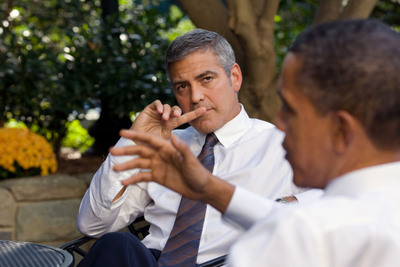
www.satsentinel.org/take_action
http://notonourwatchproject.org
http://sudanwatch.blogspot.com
Sudan (Listeni /suːˈdæn/), officially the Republic of Sudan, is a country in northeastern Africa. It is the largest country in Africa and the Arab world, and tenth largest in the world by area. The people of Sudan have a long history extending from antiquity which is intertwined with the history of Egypt, with which it was united politically over several periods. After gaining independence from Egypt and the United Kingdom in 1956, Sudan suffered 17 years of civil war followed by ethnic, religious and economic conflicts between the Northern Sudanese (with Arab and Nubian roots), and the Christian and animist Nilotes of Southern Sudan.This led to a second civil war in 1983, and due to continuing political and military struggles, Sudan was seized in a bloodless coup d’état by colonel Omar al-Bashir in 1989, who thereafter proclaimed himself President of Sudan.
Sudan then achieved great economic growth by implementing macroeconomic reforms and finally ended the civil war by adopting a new constitution in 2005 with rebel groups in the south, granting them limited autonomy to be followed by a referendum about independence in 2011. Rich in natural resources such as petroleum and crude oil, Sudan’s economy is currently amongst the fastest growing in the world. The People’s Republic of China and Japan are the main export partners of Sudan. Read More: > HERE <
Who we are – Our mission is to focus global attention and resources towards putting an end to mass atrocities around the world. Drawing upon the powerful voices of artists, activists, and cultural leaders, Not On Our Watch generates lifesaving humanitarian assistance and protection for the vulnerable, marginalized, and displaced. We encourage governing bodies to take meaningful, immediate action to protect those in harm’s way. Where governments remain complacent, Not On Our Watch is committed to stopping mass atrocities and giving voice to their victims. Founders: Don Cheadle, George Clooney, Matt Damon, Brad Pitt, David Pressman, Jerry Weintraub
A Message From George Clooney and John Prendergast – A new state is being born in Southern Sudan against a backdrop of decades of war between the South and North of Sudan. A peace deal in 2005 ended the latest round of open conflict, but the possibility of a return to war remains high as Southern Sudan prepares for independence.
One of the biggest risks in this dangerous moment is that an incident on the highly armed border could lead to wider conflict. The government in Khartoum has armed militias in contested bordering regions, the government air force has bombed border areas, and both sides have massed military units and equipment along the hottest border spots.
These areas have witnessed some of the most deadly conflict in the world since World War II. The former director of national intelligence says that Southern Sudan is the place in the world most likely to experience genocide.
We can’t allow another deadly war, and we surely cannot stand by in the face of a genocide threat.
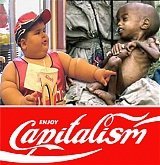
Soon, the people of Southern Sudan will vote for independence, placing millions of civilians in the potential path of war. George Clooney and the Enough Project recently spent time in Sudan along the border between the north and south and saw what a return to war could look like. This video from the trip highlights the challenges Sudan faces as it works toward holding a peaceful referendum and avoiding a return to civil war. It’s not inevitable. We can stop this war before it starts. Visit www.SudanActionNow.org to find out more.
We were late to Rwanda. We were late to the Congo. We were late to Darfur. There is no time to wait. With your support, we will swiftly call the world to witness and respond. We aim to provide an ever more effective early-warning system: better, faster visual evidence and on-the-ground reporting of human rights concerns to facilitate better, faster responses.
This is why we have launched the Satellite Sentinel Project. There has never been a sustained effort to systematically monitor potential hot spots and threats to human security, in near real-time, with the aim of heading off humanitarian disaster and war crimes before they occur.
Previously, when mass atrocities occurred in Darfur, the Government of Sudan denied its involvement. Since photographers could not get access, it took years to amass evidence of genocide. But now we can witness in near real-time and put all parties on notice that if they commit war crimes, we will all be watching, and pressuring policymakers to take action.
We want to cast a spotlight – literally – on the hot spots along the border to record any actions that might escalate the chances of conflict. We hope that if many eyes are on the potential spoilers, we can all help detect, deter and interdict actions that could lead to a return to deadly violence. At the very least, if war crimes do occur, we’ll have plenty of evidence of the actions of the perpetrators to share with the International Criminal Court and the UN Security Council.
The world is watching because you are watching. This is our opportunity to prevent a war, to deter genocide. Make your voice heard. Click here to take action in support of peace in Sudan.
- www.looktothestars.org
- 10.01.11 VIDEO Kofi Annan speaks to the BBC in an interview about the Sudan referendum
- www.ourworldisnotforsale.org
- www.otherworldsarepossible.org
- Acacia Senegal – Sudan’s Miracle Commodity *
- Articles on Africa , Traditional Medicine
- Meet Sudan Action Now, friends, fans at fb <
- Meet Human Rights Watch, friends, fans at fb <
- Meet IFG Forum on Globalization, friends, fans at fb <
- Meet Global Witness, friends, fans at fb <
- Meet Alternative Energy News, studies, friends, fans at fb <
- Meet UN Millenium Goals, studies, friends, fans at fb <
- Meet World Fair Trade Organization, friends, fans at fb <
- Meet UNHCR Refugee Agency, friends at fb <
Save Biodiversity – Herbs & Food Regulation
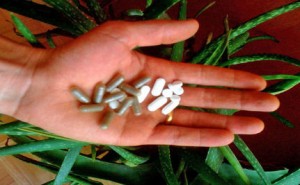
www.gmcontaminationregister.org www.un.org/humanrightsday/2010
www.anh-europe.org/freedom-health-choice
www.saveourherbs.org.uk/Petition.html
The Traditional Herbal Medicinal Products Directive, 2004/24/EC, was established to provide a regulatory approval process for herbal medicines in the European Union (EU), and came into force on 30 April 2004 . Previously, there was no formal EU wide authorisation procedure, so each EU member stated regulated these types of products at the national level. Under this regulation, all herbal medicinal products are required to obtain an authorisation to market within the EU. Those products marketed before this legislation came into force can continue to market their product until 30 April 2011, under the transitional measures defined in the Traditional Herbal Medicinal Products Directive. Once this time limit has expired, all herbal medicinal products must have prior authorisation before they can be marketed in the EU. Read More: > HERE <
Ayurveda (Sanskrit: आयुर्वेद; Ä�yurveda, the „science of life“) or ayurvedic medicine is a system of traditional medicine native to India and practiced in other parts of the world as a form of alternative medicine.In Sanskrit, the word ayurveda consists of the words Ä�yus, meaning „longevity“, and veda, meaning „related to knowledge“ or „science“.Evolving throughout its history, ayurveda remains an influential system of medicine in South Asia.The earliest literature on Indian medical practice appeared during the Vedic period in India.The Suśruta SaṃhitÄ� and the Charaka SaṃhitÄ� were influential works on traditional medicine during this era.Over the following centuries, ayurvedic practitioners developed a number of medicinal preparations and surgical procedures for the treatment of various ailments and diseases. Read More: > HERE <
Health Choice – Have you heard the hype about future restrictions on natural health products? Find out how the ‚boil-the-frog-slowly‘ method masterminded by governments and transnational corporations is out to restrict YOUR FREEDOM OF CHOICE in the area of natural healthcare.
Read on…… find out here what’s really going on. This is about your future, and that of the next generation. Where in the world are restrictions most imminent?
> European Union (EU) – Canada – United States of America (USA) – New Zealand <
As a consequence of moves to harmonise global food laws, concerted attempts to control consumer access to natural heath products are being made by governments and trans-national corporations.
At a global level the regulatory framework is being developed through the Codex Alimentarius Commission (see our Codex campaign page).
The system of control essentially moves natural health products from a category of food to products requiring pre-market authorisation, where the authorisation systems being used or proposed are very onerous and so lock out large numbers of products (e.g. around 50% of pre-2004 products in Canada).
All this is being enacted under the often conflicting guises of ‘consumer protection’ and ‚free trade‘, nearly always creating a situation where big business gets what it wants while our freedom to choose natural health products is dramatically curtailed.
Inappropriate EU legislation could effectively steam-roller ancient and effective medicine cultures, such as Ayurveda, out of existence.
Certain combinations of herbal products, and those containing significant levels of vitamins and minerals, will be prohibited.
The EU’s Human Medicinal Products Directive (HMPD), issued ostensibly to protect consumers from medical disasters such as the thalidomide tragedy, now has a scope so broad that it can be used to classify certain foods, herbs and nutrients – even water – as drugs.
Many herbal products would be evaluated by inappropriate pharmaceutical criteria, rather than by practicing medical herbalists and others with specific expertise in the field of traditional medicines.
The cost of complying with these pharma-friendly criteria will be prohibitively expensive for many small to medium size enterprises and there could be serious consequences for small herb-producing farmers and communities in non-EU countries.
As you may know The Traditional Herbal Medicinal Products Directive 2004/24/EC (THMPD) of the European Union will have long-term and far-reaching implications for Ayurveda and other Traditional Systems of Medicine (TSMs), specially for the manufacturers and practitioners of these systems. / Senate Bill S510 Makes it illegal to Grow, Share, Trade or Sell Homegrown Food — Section 510(k) and the device approval process. Food Freedom warns about the consequences from this bill.
Jede(r) von uns benutzt im täglichen Leben Heilpflanzen in Form von Tees, chinesische, ayurvedische Mittel, Kräutermischungen etc. Dies soll alles verboten werden! Lest selbst: Ab April 2011 soll das Gesetz für Nahrungsergänzungsmittelund Heilkräuter (THMPD – Traditional Herbal Medical Product Directive) EU-weit durchgesetzt werden.
Das bedeutet:Die auf Teemischungen basierende Kräuterheilkunde wäre dannwahrscheinlich um die Hälfte der dort eingesetzten Kräuter beraubt, da es wenig „wissenschaftliche Forschung“ über gebräuchliche, einheimische Kräuter gibt und diese dann ohne aufwändige Forschung keine Zulassung alsArzneimittel bekämen.
Fast alle chinesischen und ayurvedischen Heilpflanzen und ein guter Teil der europäischen Heilpflanzen sollen mit dieser EU-Novelle verboten undaus dem Handel genommen werden.
Die Gründe liegen auf der Hand: Die Pharmaindustrie hätte dieNaturheilkunde „Schachmatt“ gesetzt und könnte diesen wachsenden Marktfür sich übernehmen.Jetzt sind wir alle gefragt und können noch Einfluss nehmen.In Deinem, Ihrem, Eurem und unserem Interesse.

www.sourcewatch.org/Global_Corporations
-
www.abtei-st-hildegard.de ( WHO owns Hildegard ? )
Human Rights Day 10 December 2010

Human rights are „rights and freedoms to which all humans are entitled“.Proponents of the concept usually assert that everyone is endowed with certain entitlements merely by reason of being human.Human rights are thus conceived in a universalist and egalitarian fashion. Such entitlements can exist as shared norms of actual human moralities, as justified moral norms or natural rights supported by strong reasons, or as legal rights either at a national level or within international law. Read More: > HERE <
The United Nations Human Rights Council (UNHRC) is an inter-governmental body within the United Nations System. The UNHRC is the successor to the United Nations Commission on Human Rights (UNCHR, herein CHR), and is a subsidiary body of the United Nations General Assembly. The council works closely with the Office of the High Commissioner for Human Rights (OHCHR) and engages the United Nations‘ Special Procedures. Read More > HERE <
The Human Rights Council is an inter-governmental body within the UN system made up of 47 States responsible for strengthening the promotion and protection of human rights around the globe. The Council was created by the UN General Assembly on 15 March 2006 with the main purpose of addressing situations of human rights violations and make recommendations on them.
One year after holding its first meeting, on 18 June 2007, the Council adopted its “Institution-building package” [Word file] providing elements to guide it in its future work. Among the elements is the new Universal Periodic Review mechanism which will assess the human rights situations in all 192 UN Member States. Other features include a new Advisory Committee which serves as the Council’s “think tank” providing it with expertise and advice on thematic human rights issues and the revised Complaints Procedure mechanism which allows individuals and organizations to bring complaints about human rights violations to the attention of the Council. The Human Rights Council also continues to work closely with the UN Special Procedures established by the former Commission on Human Rights and assumed by the Council.
The High Commissioner’s statement is available as a video which will be of special interest to broadcasters and for use at particular events / Video about ordinary human rights defenders from various parts of the world. Human Rights Day, marked annually, is this year dedicated to human rights defenders who battle against discrimination.
Human Rights Day is celebrated annually across the world on 10 December.The date was chosen to honor the United Nations General Assembly’s adoption and proclamation, on 10 December 1948, of the Universal Declaration of Human Rights (UDHR), the first global enunciation of human rights. The formal establishment of Human Rights Day occurred at the 317th Plenary Meeting of the General Assembly on 4 December 1950, when the General Assembly declared resolution 423(V), inviting all member states and any other interested organizations to celebrate the day as they saw fit. Read More: > HERE <
The theme for Human Rights Day 10 December 2010 is human rights defenders who act to end discrimination.
Human rights defenders acting against discrimination, often at great personal risk to both themselves and their families, are being recognized and acclaimed on this day.
Human rights defenders speak out against abuse and violations including discrimination, exclusion, oppression and violence. They advocate justice and seek to protect the victims of human rights violations. They demand accountability for perpetrators and transparency in government action. In so doing, they are often putting at risk their own safety, and that of their families.
Some human rights defenders are famous, but most are not. They are active in every part of the world, working alone and in groups, in local communities, in national politics and internationally.
Human Rights Day 2010 will highlight and promote the achievements of human rights defenders and it will again emphasize the primary role Governments must play in enabling and protecting their role. The Day is also intended to inspire a new generation of defenders to speak up and take action to end discrimination in all of its forms whenever and wherever it is manifested.
The story does not end after 10 December 2010. The focus on the work of human rights defenders will continue through all of 2011.
Visual Designs – We would like to invite you to develop your own initiatives and make use of the visual designs. Read our “Users’ guidelines” (PDF), complete the Form and Waiver of Liability (PDF) and send it to us at: human rightsday@ohchr.org.
Traditional Food, Medicine & Biodiversity
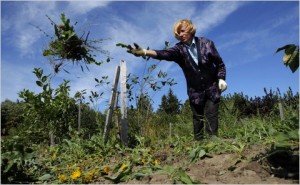
The N.I. Vavilov Institute of Plant Industry
Nikolai Ivanovich Vavilov (Russian: Николай Иванович Вавилов) was a prominent Russian and Soviet botanist and geneticist best known for having identified the centres of origin of cultivated plants. He devoted his life to the study and improvement of wheat, corn, and other cereal crops that sustain the global population. While developing his theory on the centres of origin of cultivated plants, Vavilov organized a series of botanical-agronomic expeditions, collected seeds from every corner of the globe, and created in Leningrad the world’s largest collection of plant seeds. Read More: > HERE <
The Convention on Biological Diversity (CBD), known informally as the Biodiversity Convention, is an international legally binding treaty. The Convention has three main goals: 1. conservation of biological diversity (or biodiversity);2. sustainable use of its components; and 3. fair and equitable sharing of benefits arising from genetic resources. In other words, its objective is to develop national strategies for the conservation and sustainable use of biological diversity. It is often seen as the key document regarding sustainable development. Read More: >HERE<
Ensuring that the genetic diversity of the world’s food crops is preserved for future generations is an important contribution toward the reduction of hunger and poverty in developing countries. This is where the greatest plant diversity originates and where the need for food security and the further development of agriculture is most urgent.
About VIR: “The scientific network of VIR includes the institute’s headquarters with 9 plant resources departments, 13 fundamental research laboratories, and 12 experiment stations in different geographic zones of Russia. Its chief activities are Plant Genetics Resources (PGR) collections, conservation and study.”
This recent news item was originally reported on Science Magazine’s Science Insider news feed. Earlier reportage on this story came from The Scientist blog. Top Photo: Alaska wild “berries” from the Innoko National Wildlife Refuge; U.S. Fish and Wildlife Service employee (public domain). Bottom Photo: VIR, Pavlosk Exp. Station http://www.greendump.net
Last week, we described the plight of the Russian Pavlovsk Experimental Station: Plans for a housing complex threaten some 5,000 rare plants, including varieties found nowhere else on the planet. A court judgment last week meant that only the president or prime minister could save the plants, which scientists said would take years to relocate. Now government telegrams and a presidential tweet hint that the plants might have a chance. http://blogs.discovermagazine.com
Russia Defers Razing of Seed Repository – modest reprieve for a seed bank that is home to the world’s largest collection of European fruits and berries. http://green.blogs.nytimes.com
The Vavilov Institute in Russia is the oldest seed bank in the world with a collection of over 325,000 samples of seed. Video from The Vavilov Institute from The Seed Hunter on National Geographic Channel http://natgeotv.com
Vavilov Institut Alblinse, Russian Housing Plan Threatens Seed Bank
The Institute of Plant Industry http://www.vir.nw.ru/ was established in 1921. Nikolai Vavilov was the head of this institute from 1924 to 1936 and had, and still has, the world’s largest collection of plant seeds. During the early 1930s, he became the target of the Lysenkoist debate and was exiled. In 2010 the plant collection at the Pavlovsk Experimental Station was to be destroyed to make way for luxury housing
IRRI http://irri.org Rice Research is a nonprofit research and education center established to reduce poverty and hunger, improve the health of rice farmers and consumers, and ensure environmental sustainability
Navdanya http://www.navdanya.org is a network of seed keepers and organic producers spread across 16 states in India.Navdanya has helped set up 54 community seed banks across the country, trained over 500,000 farmers in seed sovereignty, food sovereignty and sustainable agriculture over the past two decades, and helped setup the largest direct marketing, fair trade organic network in the country.
ARCHE NOAH: http://www.arche-noah.at Wir sehen unsere Arbeit als Antwort auf die restriktive globale Saatgutpolitik. Die Vielfalt an Kulturpflanzen ist Lebensgrundlage für kommenden Generationen. Und Lebensqualität für uns alle ! Wir sind ein Verein, der sich seit fast 20 Jahren für den Erhalt alter Kulturpflanzen einsetzt, mit über 8.000 Mitgliedern, Förderern und aktiven ErhalterInnen.
Svalbard Global Seed Vault – Cultural plants for the future. http://www.regjeringen.no Since the climate conditions change so rapidly, it is extremely important to ensure the genetic diversity of all the cultural plants of the world. In these genes, we will find the necessary qualities to make effective cultural plants in the future. This is absolutely necessary to secure a satisfactory food supply for the global population. Within the next 40 years, the world’s food production must be doubled, says the Norwegian minister of agriculture and food, Lars Peder Brekk.
Was wären die Schwaben ohne ihre Linsen? Trotzdem stellten Ende der 50er Jahre die letzten Landwirte “auf der Alb” den Anbau von Linsen ein, da die Importe zu billig waren und den Verbrauchern egal war, woher ihre Linsen kamen. Im Pflanzenbau herrschte damals der Zeitgeist “höher, schneller und immer mehr”. Hauptsache, der Ertrag von Weizen, Mais und Kartoffeln stieg. Egal, wie viel “Chemie” dazu auf den Acker kam. Diese Ideologie war den hiesigen Bio-Bauern schon immer ein Dorn im Auge.
Außerdem vermissten sie ihre Heimatfrucht aus der Kindheit: “Die alten Bauern bei uns in der Gegend haben uns erzählt, wie sie noch Linsen angebaut haben, zusammen mit Gerste ( GERSTE IM AYURVEDA ) und Hafer, als Stützfrucht für die zarten Pflanzen. Beim Linsen essen haben wir davon geträumt, wieder Alb-Linsen auszusäen”, erinnert sich Woldemar Mammel. Der Bioland-Bauer aus Lauterach auf der Alb baut bereits seit den 80er Jahren wieder Linsen an und begeisterte auch andere für seine Idee. Mittlerweile machen elf Bäuerinnen und Bauern in der “Öko-Erzeugergemeinschaft «Alb-Leisa»” mit und bewirtschaften 30 Hektar mit Albleisen.
Unterstützung bekommen sie von anderen Verfechtern guter Esskultur: Vor zwei Jahren hat Slow Food Deutschland die Alb-Linse in die “Arche des Geschmacks” aufgenommen, um dieses traditionelle landwirtschaftliche Erzeugnis der Schwäbischen Alb vor dem Vergessen zu retten. Die Sache hat nur einen Haken: Die original schwäbischen Alb-Linsen waren bis vor kurzem unauffindbar und so mussten sich die Bio-Bauern mit französischen und italienischen Sorten behelfen. “Niemand hatte es für nötig gehalten, diese einzigartigen, im Bundessortenregister eingetragenen Linsensorten aufzubewahren”, beklagt Mammel.
Doch die verschollenen Linsen berührten auch andere schwäbische Herzen: 2006 machten sich unabhängig voneinander der private Pflanzenzüchter Klaus Lang und Klaus Amler von der Stuttgarter Agentur Ökonsult auf die Suche. Beide werden ein Jahr später in Russland fündig! Das Wawilow-Institut in St. Petersburg, das seit 1925 für die Genvielfalt der Nutzpflanzen kämpft, hat die zwei Sorten aufbewahrt.
RICE: Rice is first mentioned in the Yajur Veda (c. 1500-800 BC) and then is frequently referred to in Sanskrit texts. Today, the majority of all rice produced comes from India, China, Japan, Indonesia, Thailand, Burma, and Bangladesh.
Asian farmers still account for 92-percent of the world’s total rice production. Rice is grown in all parts of India. Genetics shows that rice was first domesticated in the region of the Yangtze River Valley. Read More: > HERE <
- www.pranapositive.com/shm/Save Herbal Medicine
- Articles on Biodiversity
- IRRI Rice Research/Climate Change /Bioversity/Eco Crises
- www.intlcss.org International Crop Science Society
- ARCHE NOAH, Erhaltung/Verbreitung Kulturpflanzenvielfalt
- Meet UN International Day 2010 of Biodiversity at fb
- Meet Global Biodiversity Protection at fb
- www.ienearth.org Indigenous Environmental Network at fb
- www.navdanya.org studies friends fans at fb
- www.ecobuddhism, friends and studies at fb
- Greenpeace China 绿色和平 綠色和平 at fb
- Meet SLOW FOOD , friends, pages at fb
- Meet TIBETAN TSAMPA Group and Friends at fb
- http://en.wikipedia.org/wiki/Farmers’_suicides_in_India
- http://en.wikipedia.org/wiki/Europ.Directive Trad.Herbal_Med.Products
- Meet COP 16 UN Conference, friends, studies, fans at fb
- Meet International Year of Biodiversity, friends, fans at fb
- Meet NaturalNews.com at facebook
NaturalNews.com is an independent news resource that covers the natural health and wellness topics that empower individuals to make positive changes in their personal health. NaturalNews offers uncensored news that allows for healthier choice.
Grameen Shakti Solar Renewable Power
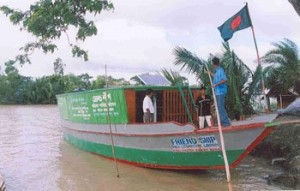
www.sourcewatch.org/Renewable_energy
www.rightlivelihood.org/grameen_shakti.html
www.gshakti.org Solar
Muhammad Yunus (Bangla: মুহাম্মদ ইউনুস, pronounced Muhammôd Iunus) (born 28 June 1940) is a Bangladeshi banker, economist and Nobel Peace Prize recipient. He previously was a professor of economics where he developed the concepts of microcredit and microfinance. These loans are given to entrepreneurs too poor to qualify for traditional bank loans. Yunus is also the founder of Grameen Bank. In 2006, Yunus and the bank were jointly awarded the Nobel Peace Prize, „for their efforts to create economic and social development from below.“Yunus himself has received several other national and international honors. He is the author of Banker to the Poor and a founding board member of Grameen America and Grameen Foundation. > HERE < The Grameen Bank is a microfinance organization and community development bank started in Bangladesh that makes small loans (known as microcredit) to the impoverished without requiring collateral. The system is based on the idea that the poor have skills that are under-utilized. The bank also accepts deposits, provides other services, and runs several development-oriented businesses including fabric, telephone and energy companies. The organization and its founder, Muhammad Yunus, were jointly awarded the Nobel Peace Prize in 2006. Read More: > HERE <
Grameen Shakti (GS) has developed one of the most successful market based program with a social objective for popularizing Solar Home Systems (SHSs) including other renewable energy technologies to millions of rural villagers.
Currently GS is one of the largest and fastest growing rural based renewable energy companies in the world. And Bangladesh, a country with one of the most successful renewable energy program in the world. As of December 2009, GS has installed more than 3,20,000 SHSs in rural areas with more than 12,000 SHSs installed per month. This success especially was the result of unique approach, blending market and social forces together to take world’s most up to date technology to the rural people.
„It is a fact that the future belongs to Renewable Energy Technologies. But unless this technology can reach the millions of rural people who suffer most from the energy crisis, it will not reach its full potential, and neither will the economic and social problems of the world be solved. — Dipal Barua
GS used its Grameen Bank’s experience to evolve a financial package based on installment payment which reduced costs and helped it to reach economy of scale. GS had to earn the good will of the rural people and especially provide excellent after sales services to ensure the success of its program. GS engineers are also called social engineers. GS engineers train women technicians and provide them with employment, they administer a scholarship program for school children, they collect damaged batteries to ensure that these do not hurt the environment. GS engineers pay monthly visits to households during installment payment and ready to offer their services for a small fee, afterwards, if a client signs an annual maintenance agreement with GS.
„It is a fact that the future belongs to Renewable Energy Technologies. But unless this technology can reach the millions of rural people who suffer most from the energy crisis, it will not reach its full potential, and neither will the economic and social problems of the world be solved. — Dipal Barua
GS solar PV program really took off the ground when rural clients realized SHSs are more cost effective than other conventional sources of energy such as kerosene and provide more utilities.
GS started its biogas program in 2005 and Improved Cook Stoves Program in 2006. GS’s biogas program is the first market based program in Bangladesh. Both programs have become popular with the rural people and show an accelerating trend.
Rural electrification through solar PV technology is becoming more popular, day by day in Bangladesh. Solar Home Systems (SHSs) are highly decentralized and particularly suitable for remote, inaccessible areas. GS’s solar program mainly targets those areas, which have no access to conventional electricity and little chance of getting connected to the grid within 5 to 10 years. It is one of its most successful programs. Currently, GS is one of the largest and fastest growing rural based renewable energy companies in the world. GS is also promoting Small Solar Home System to reach low income rural households.
SHSs can be used to light up homes, shops, fishing boats etc. It can also be used to charge cellular phones, run televisions, radios and cassette players. SHSs have become increasingly popular among users because they present an attractive alternative to conventional electricity such as no monthly bills, no fuel cost, very little repair, maintenance costs, easy to install any where etc.
GS installed SHSs have made a positive impact on the rural people. GS has introduced micro-utility model in order to reach the poorer people who cannot afford a SHS individually. Another successful GS venture is Polli Phone which allows people is off grid areas the facilities of telecommunication through SHS powered mobile phones.
Coming Famine – Training for Development
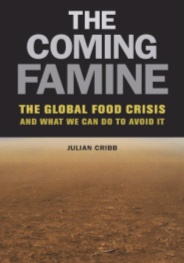
The Millennium Development Goals (MDGs) „are the most broadly supported, comprehensive and specific development goals the world has ever agreed upon. These eight time-bound goals provide concrete, numerical benchmarks for tackling extreme poverty in its many dimensions. They include goals and targets on income poverty, hunger, maternal and child mortality, disease, inadequate shelter, gender inequality, environmental degradation and the Global Partnership for Development. „Adopted by world leaders in the year 2000 and set to be achieved by 2015, the MDGs are both global and local, tailored by each country to suit specific development needs. They provide a framework for the entire international community to work together towards a common end – making sure that human development reaches everyone, everywhere. If these goals are achieved, world poverty will be cut by half, tens of millions of lives will be saved, and billions more people will have the opportunity to benefit from the global economy.“ Read More click HERE
COP16 will be the sixteenth Conference of the Parties (COP) under the United Nations Framework Convention on Climate Change (UNFCCC). The conference will be held in Mexico between November 29 and December 10, 2010. Read More: click HERE
A famine is a widespread scarcity of food that may apply to any faunal species. This phenomenon is usually accompanied by regional malnutrition, starvation, epidemic, and increased mortality. Long term measures include investment in modern agriculture in places that lack them, such as fertilizers and irrigation, which largely eradicated hunger in the developed world. However, World Bank strictures restrict government subsidies for farmers and the spread of fertilizer use is hampered by some environmental groups . Read More: click HERE
The coming famine: risks and solutions for global food security – Growing scarcities of water, land, oil and nutrients will combine with climate change to create a serious threat to global food security in coming decades. These could result in major regional famines, wars and refugee crises. Julian Cribb warns:
In The Coming Famine, Julian Cribb lays out a vivid picture of impending planetary crisis–a global food shortage that threatens to hit by mid-century–that would dwarf any in our previous experience. Cribb’s comprehensive assessment describes a dangerous confluence of shortages–of water, land, energy, technology, and knowledge–combined with the increased demand created by population and economic growth.
Writing in brisk, accessible prose, Cribb explains how the food system interacts with the environment and with armed conflict, poverty, and other societal factors. He shows how high food prices and regional shortages are already sending shockwaves into the international community. But, far from outlining a doomsday scenario, The Coming Famine offers a strong and positive call to action, exploring the greatest issue of our age and providing practical suggestions for addressing each of the major challenges it raises.
“The Coming Famine” will be published by the University of California Press and CSIRO Publishing in August 2010. It was supported by the Crawford Fund and Land & Water Australia.
www.EndPoverty2015.org www.standagainstpoverty.org
End poverty by 2015. This is the historic promise 189 world leaders made at the United Nations Millennium Summit in 2000 when they signed onto the Millennium Declaration and agreed to meet the Millennium Development Goals (MDGs). The MDGs are an eight-point road map with measurable targets and clear deadlines for improving the lives of the world’s poorest people. World leaders have agreed to achieve the MDGs by 2015.
The United Nations Millennium Campaign supports and inspires people from around the world to take action in support of the Millennium Development Goals.
Join the UN Millennium Campaign and be part of the generation that puts an end to poverty.
Rising from Ashes – Development as Freedom
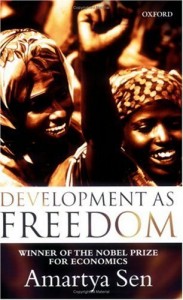
3rd International Rice Congress (IRC 2010)
Amartya Kumar Sen, CH (Bengali: , Ômorto Kumar Shen; born 3 November 1933) is an eminent Indian economist and philosopher. He is currently the Thomas W. Lamont University Professor and Professor of Economics and Philosophy at Harvard University. He is also a senior fellow at the Harvard Society of Fellows and a Fellow of Trinity College, Cambridge, where he previously served as Master from the years 1998 to 2004.He is the first Asian and the first Indian academic to head an Oxbridge college. He has been called „the Conscience and the Mother Teresa of Economics“for his work on famine, human development theory, welfare economics, the underlying mechanisms of poverty, gender inequality, and political liberalism. However, he refutes the comparison to Mother Teresa by saying that he has never tried to follow a lifestyle of dedicated self-sacrifice. In 1998, Sen won the Nobel Memorial Prize in Economic Sciences for his contributions to work on welfare economics. Amartya Sen’s books have been translated into more than thirty languages. He is a trustee of Economists for Peace and Security. In the year 2006, Time magazine listed him under „60 years of Asian Heroes“and now in 2010 as among the 100 most influential persons in the world.
Sen was born in Santiniketan, West Bengal, the university town established by the poet Rabindranath Tagore, another Indian Nobel Prize winner. His ancestral home was in Wari, Dhaka in modern-day Bangladesh. Rabindranath Tagore is said to have given Amartya Sen his name („Amartya“ meaning „immortal“). Sen hails from a distinguished family: his maternal grandfather Kshitimohan Sen, a close associate of Rabindranath Tagore, was a renowned scholar of medieval Indian literature, an authority on the philosophy of Hinduism, and also the second Vice Chancellor of Visva-Bharati University. Read More HERE
NÄ�landÄ� (Hindi/Sanskrit/Pali: नालंदा) is the name of an ancient center of higher learning in Bihar, India. The site of Nalanda is located in the Indian state of Bihar, about 55 miles south east of Patna, and was a Buddhist center of learning from 427 to 1197 CE. It has been called „one of the first great universities in recorded history.“ Read More: HERE
Sen starts out addressing the question of whether or not freedom is conducive to development. He feels that such a question is at best defectively formulated, for reasons given below. Sen ponders over how freedom is often dissociated from development, and considered a pleasant consequence thereof. However, Sen counters that freedom in itself should be the goal of development, and it is both constitutive and instrumental to development.
He makes the argument that freedom (political, economic or societal) is central to achieving development; while freedom may result from such development, it would be unwise to ignore the inverse relationship, and true development will only happen through the proliferation of such freedoms. Furthermore, if the definition of development is to move beyond GNP and include freedom, unfree societies aren’t really quite developed.
Sen also argues against the “Lee Hypothesis”, named after the first Prime Minister of Singapore, Lee Kuan Yew. The idea behind the “Lee Hypothesis” is that democracy and freedom are luxuries that only developed societies can afford, and to become developed, less-developed societies will need to push forth agendas that may be at odds with democracy and freedom. Furthermore, a more ardent view would be that “non-democratic systems are better in bringing about economic development” for such societies.
In the same vein, he also takes to task the interpretation that “Asian Values” are inherently unsuitable and unfit for democracy, where Asia is defined not by region but through culture. The argument goes that discipline and obedience are critical traits to the Asian cultural psyche and as such, democracy is at odds with such a principle. This particular notion has had the unfortunate reputation of being exploited by authoritarian governments across Asia.
Sen counters both the “Lee Hypothesis” and the “Asian Values” argument by offering the example of the biggest democracy in Asia — India. While India has made several economic mistakes through the years, the fact that it continues to be free democracy has helped its economy grow while preserving the freedoms of its citizens. Sen also counters that the “Asian Values” argument isn’t necessarily unique to Asia, and that even within Asia, there have been differing schools of thought, including those that question blind allegiance to the state. And of course, this book also touches upon Sen’s (now-famous) insight on famines and democracies.
He argues that famines are not necessarily caused by lack of declines in food production but rather due to instability in the political, economic, or societal structures that leaves sections of the population unable to fend for themselves.
Sen further proposes that countries that are “free” in the economic sense would have citizenry with a consistent income flow, and this income can be used to borrow or import basic necessities in times of need.
In Development as Freedom Amartya Sen explains how in a world of unprecedented increase in overall opulence millions of people living in the Third World are still unfree. Even if they are not technically slaves, they are denied elementary freedoms and remain imprisoned in one way or another byeconomic poverty, social deprivation, political tyranny or cultural authoritarianism. The main purpose of development is to spread freedom and its ‚thousand charms‘ to the unfree citizens. Freedom, Sen persuasively argues, is at once the ultimate goal of social and economic arrangements and the most efficient means of realizing general welfare.
Social institutions like markets, political parties, legislatures, the judiciary, and the media contribute to development by enhancingindividual freedom and are in turn sustained by social values. Values, institutions, development, and freedom are all closely interrelated, and Sen links them together in an elegant analytical framework. By asking ‚What is the relation between our collective economic wealth and our individualability to live as we would like?‘ and by incorporating individual freedom as a social commitment into his analysis Sen allows economics once again, as it did in the time of Adam Smith, to address the social basis of individual well-being and freedom. But at the end of the day, Sen concludes that true development cannot be measured through mere tangibles (e.g. GNP). Freedom remains the only true measure of development, and when there is freedom, development will follow.
„Poverty is perpetuated by our Institutions“ http://wn.com/amartya_sen_think_and_act http://www.theendofpoverty.com
Amartya Sen, Born in West Bengal, India, he has a patrician style: occasionally loquacious, often ironic, usually genial, always brilliant. Crucially, at the other, older Cambridge, Sen studied philosophy and economics. He has always concerned himself as much with moral as material problems. In his most famous book, Poverty and Famines — inspired by the Bengal famine of 1943, which he witnessed as a boy — he asked how people could starve when food was available. The answer was that the poor simply lacked the capability to buy it. On these and other issues, the argumentative Indian has persuaded.
His notion of measuring human development is now central to the work of the U.N. and the World Bank. As a result, Sen’s influence extends all the way down to what another great economist has called „the bottom billion.“ http://www.time.com/time/specials.html
Amartya Sen, the World Bank, and the Redress of Urban Poverty: A Brazilian Case Study – While there is some suggestion of a re-orientation in the World Bank’s income-cantered conceptualization of poverty to one based on Amartya Sen’s concept of ‚development as freedom‘, it is hard to uncover definitive evidence of such a re-orientation from a study of the Bank’s urban programmes in Brazil. This paper attempts an application of Sen’s capability approach to the problem of improving the urban quality of life, and contrasts it with the World Bank’s approach, with specific reference to a typical squatter upgrading project in Novos Alagados in Salvador da Bahia, Brazil. Click here
A GLOBAL EDUCATION PROGRAM – THE CASE OF NOVOS ALAGADOS, Salvador Bahia, Brazil – In development programs it is fundamental to set upmalliances finalised towards the common objective: a partnership between subjects to set synergies and large amounts of resources into motion. The role of AVSI was exactly the one of aggregating and involving local administrations, social forces, international institutions, according to their respective roles, to meet the needs confronting them, for the common good.
The program had the peculiarity to have a large wealth of resources converge on the territory, through the partnership network, thus opening up the area towards the world and the world towards the area.
India’s lost Buddhist university to rise from ashes – Indian academics have long dreamt of resurrecting Nalanda University, one of the world’s oldest seats of learning which has lain in ruins for 800 years since being razed by foreign invaders.
Now the chance of intellectual life returning to Nalanda has come one step closer after the parliament in New Delhi last month passed a bill approving plans to re-build the campus as a symbol of India’s global ambitions.
Historians believe that the university, in the eastern state of Bihar, once catered for 10,000 students and scholars from across Asia, studying subjects ranging from science and philosophy to literature and mathematics.
Founded in the third century, it gained an international reputation before being sacked by Turkic soldiers and its vast library burnt down in 1193 — when Oxford University was only just coming into existence.
Piles of red bricks and some marble carvings are all that remain at the site, 55 miles (90 kilometres) from Bihar’s state capital of Patna.
„Nalanda was one of the highest intellectual achievements in the history of the world and we are committed to revive it,“ said Amartya Sen, the renowned economist and Nobel laureate who is championing the project.
„The university had 2,000 faculty members offering a number of subjects in the Buddhist tradition, in a similar way that Oxford offered in the Christian tradition,“ he said at a promotional event in New Delhi.
The new Nalanda University has been allocated 500 acres (200 hectares) of land near its original location, but supporters who have lobbied for the cause for several years admit that major funds are needed if Nalanda is to rise from the ashes.
„Income from a number of villages, and funds from kings, supported the ancient Nalanda. Now we have to look for donations from governments, private individuals and religious groups,“ said Sen. Whatever the financial position, the need for more high-level educational institutes in India is clear. Click HERE
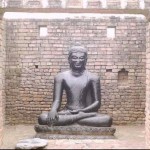

- DEVELOPMENT AS FREEDOM <
- Naropa & Nalanda University <
- Jain Tradition & Nalanda University <
- http://nobelprize.org/nobel_prizes/economics/sen-autobio.html
- http://nobelprize.org/nobel_prizes/peace/laureates/2006/yunus.html
- http://www.avsi.org/NovosAlagados.pdf
- Meet IRRI Rice Research Center, studies, friends, fans at fb <
- Meet Yunus Center, studies, friends, fans at fb <
- Meet Human Rights Watch, friends, fans at fb <
- Meet Transparency International, friends, fans at fb <
- Meet FAIR TRADE, friends, fans at fb < & www.ethicalconsumer.org
- Meet International Year of Biodiversity, friends, fans at fb <
- Meet Support UN Resolution on the Right to Water and Sanitation <
- Meet UN Millennium Development Goals, friends, fans at fb <
- Meet International Year of Biodiversity, friends, fans at fb <
- Meet COP16 to the UN Framework Convention on Climate Change at fb <
Childwellness – Uttaranchal Cuisine
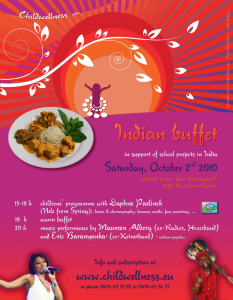
http://hindupad.com/gangotri-yatra-2010
Uttaranchal was a state of India. On 9 November 2000 Uttaranchal was carved out of Uttar Pradesh as a separate state. In January 2007, the name of the state was officially changed from Uttaranchal, its interim name, to Uttarakhand. Uttarakhand (Sanskrit: उत्तराखण्डम्, Hindi: उत्तराखण्ड UttarÄ�khanḍ) is a state located in the northern part of India. Known for its natural beauty, it was carved out of Himalayan and adjoining districts of Uttar Pradesh on 9 November 2000, becoming the 27th state of the Republic of India. It borders the Tibet Autonomous Region on the north, Nepal on the east and the Indian states of Uttar Pradesh to the south, Haryana to the west and Himachal Pradesh to the north west. The region is traditionally referred to as Uttarakhand in Hindu scriptures and old literature, a term which derives from Sanskrit uttara (उत्तर) meaning north, and khaṇḍ (खण्ड्) meaning country or part of a country. It has an area of 20,682 sq mi (53,566 km²). In January 2007, the name of the state was officially changed from Uttaranchal, its interim name, to Uttarakhand. The provisional capital of Uttarakhand is Dehradun which is also a rail-head and the largest city in the region. The small hamlet of Gairsen has been mooted as the future capital owing to its geographic centrality but controversies and lack of resources have led Dehradun to remain provisional capital. The High Court of the state is in Nainital.
Recent developments in the region include initiatives by the state government to capitalise on handloom and handicrafts, the burgeoning tourist trade as well as tax incentives to lure high-tech industry to the state. The state also has big-dam projects, controversial and often criticised in India, such as the very large Tehri dam on the Bhagirathi-Bhilangana rivers, conceived in 1953 and about to reach completion. Read more: > HERE <
Childwellness – orphans, neglected children and children of poor families. Therefore we provide them with food, healthcare and education. If necessary we also look for permanent and stable homes in their own environment, for and a loving family form the necessary basis for a child to grow up in a balanced way. To achieve this, objectives. You can find an overview of our selections further in this presentation folder click here.
Childwellness task is to raise funds in order to support these projects financially. For that,sponsoring activities are organised annually. By means of participation of grants and festivals, Childwellness aims to reach a larger public. Furthermore Childwellness tries to find companies, associations, schools and other agencies for possible sponsoring. If you are able to help us with this, please contact us. Childwellness is also looking for monthly sponsors who want to financially support our projects on a regular basis.
Vivekananda Residential Tribal School (Vidyalaya, Wayanad District, Kerala, India) – The school has approximately 250 children, and it specifically works with tribal children. Most of them are orphans: they’ve lost their father and/or mother and therefore live permanently at school. Tribals are a very vulnerable group of people in India because they don’t belong to any caste. They are also economically extremely vulnerable because they can no longer live in their natural surroundings: their forest has become a National Reserve.
The children receive an education, a uniform, and 3 meals a day. One child in this school costs 10 Euro/month (8.93 GBP or 14.92 USD; currency of November 14, 2009) with everything included. Presently, the most important need of this school is a dormitory with 150 beds for the boys. Childwellness hopes to sponsor this dormitory as much as possible.
Childwellness supports educational projects in India. We want orphans and children of poor families to have access to a comprehensive education because good school training is of huge importance for the future of every child. Childwellness wants to prevent parents or other family members from sending young children to work to earn money, which results in them missing important chances in life. As fact, India remains a country with a significant prevalence in child lab.
“ASIA FAIR” For the first time in its existence. Childwellness took part in the “Asia Fair”, a unique event with a large turnout ! We still look back on the success of the weekend, where a number of significant contacts for the future were made.
Uttaranchal Delicious Cuisines – „I am damn sure that a true lover of food will understand the value of this group.“ The traditional cuisine of the land is highly nutritious, simple to prepare and at the same time appealing to the palate. You can have delicious and mouth-watering Pahari recipes from Garhwal and Kumaon region of Uttaranchal. Hope you will enjoy the recipes…….
http://www.internationalrivers.org/-himalayas-dam-boom
Audio Slideshow: Mountains of Concrete – A dam-building boom in the Himalayas in times of global warming is like investing billions of dollars in high-risk, non-performing assets …
Gangotri (Hindi: गंगोत्री) is a town and a Nagar Panchayat (municipality) in Uttarkashi district in the state of Uttarakhand, India. It is a Hindu pilgrim town on the banks of the river Bhagirathi. It is on the Greater Himalayan Range, at a height of 3,042 m. Gangotri, the origin of the river Ganga and seat of the goddess Ganga, is one of the four sites in the Char Dham pilgrimage circuit. The river is called Bhagirathi at the source and acquires the name Ganga from Devprayag onwards where it meets the Alaknanda. The origin of the holy river is at Gaumukh, set in the Gangotri Glacier, and is a 19 km trek from Gangotri. Gangotri can be reached in one day’s travel from Rishikesh, Haridwar or Dehradun, or in two days from Yamunotri, the first site in the Char Dham circuit. More popular and important than its sister site to the east, Gangotri is also accessible directly by car and bus, meaning that it sees many more pilgrims than Yamunotri. Read More: > HERE <
This small town is centered around a temple of the goddess Ganga, which was built by the Nepalese General, Amar Singh Thapa in the early 18th century. The temple is closed on Diwali day every year and is reopened in May. During this time, the idol of the goddess is kept at Mukhba village, near Harsil.
Ritual duties are supervised by the Semwal family of pujaris. The aarti ceremony at the Gangotri is especially impressive, as is the temple, a stately affair that sits on the banks of the rushing Ganga. Adventurous pilgrims can make an overnight 18 km trek to Gaumukh, the actual current source of the river Ganga.
Bhagirathi River at Gangotri. For a large number of tourists, Gangotri town serves as the starting point of the Gangotri-Gaumukh-Tapovan and Gangotri-Kedartal trekking routes.
The Ganges (also Ganga DevanÄ�garÄ�: गंगा) is a major river in the Indian subcontinent flowing east through the eponymous plains of northern India into Bangladesh. The 2,510 km (1,557 mi) long river begins at the Gangotri Glacier in the Indian state of Uttarakhand in the central Himalayas and drains into the Bay of Bengal through its vast delta in the Sunderbans. It has enjoyed a position of reverence since millenia among India’s Hindus, by whom it is worshipped in its personified form as the goddess Ganga (see below). The Ganges and its tributaries drain a large and fertile basin with an area of about one million square kilometres that supports one of the world’s highest density human populations.
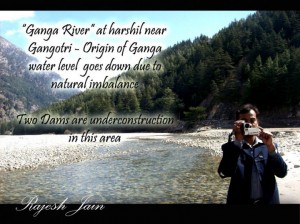
Shockingly, this dam boom is not being analyzed for the biggest threat to hydrological projects of our time: global warming. “The possible impacts of climate change are not being considered – neither for individual dams, nor cumulatively,” says Shripad Dharmadhikary, author of Mountains of Concrete: Dam Building in the Himalayas.
A dam-building boom in the Himalayas in times of global warming is like investing billions of dollars in high-risk, non-performing assets. In the Himalayas, „melting glacier water will replenish rivers in the short run, but as the resource diminishes, drought will dominate the river reaches in the long term,“ says Xin Yuanhong, a senior engineer with a Chinese team that is studying the glaciers of the Tibetan plateau.
The International Centre for Integrated Mountain Development, ICIMOD, in Nepal and the Intergovernmental Panel on Climate Change agree that global warming will also lead to more storms and floods, especially in tropical and mountainous regions. A report by ICIMOD on the impact of climate change on Himalayan glaciers states: “On the Indian subcontinent, temperatures are predicted to rise between 3.5 and 5.5°C by 2100. An even higher increase is predicted for the Tibetan Plateau. Climate change is not just about averages, it is also about extremes. The change in climate is likely to affect both minimum and maximum-recorded temperatures as well as triggering more extreme rainfall events and storms.” These heavy storms and floods will jeopardize the economic profitability of hydropower projects, as well as the safety of these mountains of concrete.The sudden bursting of glacial lakes is another major concern for the safety of planned dams, and ultimately the rivers and peoples of the Himalayas. Glacial lake outburst floods (GLOFs) are a recent phenomenon. As glaciers in high-altitude regions such as the Himalayas melt, they can form large lakes behind temporary dams of ice and rock. When these moraine dams collapse, millions of cubic meters of water are released, resulting in massive flash floods. The Dig Tsho GLOF in Nepal in 1985 was one of the most devastating glacial lake bursts in recent history. The bursting of this glacial lake near Mount Everest caused a huge flood wave that travelled down the valley, killing five people and destroying one hydropower station, many acres of cultivated land and 14 bridges.
Hydropower projects and Climate Change Himalaya « Climate Himalaya
http://chimalaya.org/category/hydropower-projects-and-climate-change-himalaya/Himalayas hydroelectric dam project stopped after scientist on hunger strike against the project almost diesEminent Indian professor calls off fast after government agrees to speed up inquiry into river flow in sacred Gangeshttp://www.guardian.co.uk/environment/2009/mar/13/himalaya-dams
Himalaya May Become Most Heavily Dammed Region of the World | Blue … Over one billion people rely on the waters of the Himalaya for survival, and massive dam building will negatively affect this important source of water. South Asia should look at other sources of renewable energy, as dams have been proven to be detrimental to ecosystems in America. Damming Asia will not solve the world water crisis while meeting the energy needs of this growing region.
http://bluelivingideas.com/topics/climate-change/himalaya-heavily-dammed-region-world/
Unaware of risks
The Himalaya is one of the fastest changing regions of the world due to global warming. The mountains’ mighty glaciers, the source of large and important rivers such as the Ganga, Indus und Brahmaputra, are melting. In February 2009, Chinese scientists warned that glaciers on the Tibetan plateau are melting at a “worrisome speed“, threatening South Asia’s water supply. In spite of this dramatic trend, the governments of India, Pakistan, Nepal and Bhutan are planning to transform the Himalayan rivers into the powerhouse of South Asia. They want to build hundreds of mega-dams to generate electricity from the waters of the Himalayas.
Devastating lake bursts
The sudden bursting of glacial lakes is another major concern for the safety of planned dams, and ultimately the rivers and peoples of the Himalayas. Glacial lake outburst floods (GLOFs) are a recent phenomenon. As glaciers melt, they can form large lakes behind temporary dams of ice and rock. When these moraine dams collapse, millions of cubic meters of water are released, resulting in massive flash floods. The Dig Tsho GLOF in Nepal in 1985 was one of the most devastating glacial lake bursts in recent history. The bursting of this glacial lake near Mount Everest caused a huge flood wave that travelled down the valley, killing five people and destroying one hydropower station, 14 bridges and many acres of cultivated land.
In January 2009, the government of Bhutan identified more than 2,600 glacial lakes in the country, of which 25 are considered to be at high risk of bursting, according to Bhutan’s Department of Geology and Mines. While Bhutan is aware of the risk of GLOFs and is improving its early warning system, the country, together with India, is still currently constructing one of the largest hydropower dams in the region, the 90-meter-high Tala project on the Wangchu River.
One billion people in South Asia and many millions in China depend on the Himalayan rivers – for agriculture as well as for drinking water supplies. While we can’t predict the future course of change to these lifelines from global warming, we can no longer presume that there will always be abundant snow and glaciers in the Himalayas, feeding Ganga, Indus und Bhramaputra with as much water as in the last 50 years.
While we can’t predict the future course of change to these lifelines from global warming, we can no longer presume that there will always be abundant snow and glaciers in the Himalayas. If the Himalayan governments go forward with their planned dam boom, they deny that global warming is actually transforming their region and our planet.
China’s Himalayan plan: Dam on Brahmaputra – He said the proposed project’s greatest risk for India and Bangladesh is seismic activity and not water diversion. The laws of physics will not allow water diversion from the great bend, he wrote on the blog.
The blog post also listed an alternative unofficial proposal at a 2,400 m drop in altitude at Daduqia.
“But it is near the border with India and would be highly exposed if there were another conflict,’’ he wrote.
http://www.hindustantimes.com/China-s-Himalayan-plan-Dam-on-Brahmaputra/Article1-548572.aspx
Pollution and Climate Change in Himalaya « Climate Himalaya Initiative –http://chimalaya.org/category/pollution
The Himalayan headwaters of the Ganges river in the Uttarakhand state of India. … There, a dam diverts some of its waters into the Ganges Canal, ….. In 2007, the Intergovernmental Panel on Climate Change (the „IPCC“), in its Fourth … http://en.wikipedia.org/wiki/Ganges
Mountains of Concrete: Dam Building in the Himalayas
http://www.scribd.com/doc/8808220/Mountains-of-Concrete-Dam-Building-in-the-Himalayas
Dams and the Worldbank – The World Bank is the greatest single source of funds for large dam construction, having provided more than US$50 billion (1992 dollars) for construction of more than 500 large dams in 92 countries. The World Bank has been „directly or indirectly associated“ with around 10% of large dams in developing countries (excluding China, where the Bank had funded only eight dams up to 1994). The importance of the World Bank in major dam schemes is illustrated by the fact that it has directly funded four out of the five highest dams in developing countries outside China, three out of the five largest reservoirs in these countries, and three of the five largest hydroplants. http://www.whirledbank.org/environment/dams.html
„Clean Energy for the Poorest Countries“ ~ World Bank Drawing on examples from Asia, Africa and the Americas, Survival’s report Serious Damage exposes the untold cost of obtaining ‘green’ electricity from large hydroelectric dams. A rapid increase in global dam-building is currently under way. The World Bank alone is pouring $11bn into 211 hydropower projects worldwide.
The World Bank’s current focus is on the achievement of the Millennium Development Goals (MDGs), lending primarily to „middle-income countries“ at interest rates which reflect a small mark-up over its own (AAA-rated) borrowings from capital markets; while the IDA provides low or no interest loans and grants to low income countries with little or no access to international credit markets. http://en.wikipedia.org/wiki/Millenium_goals
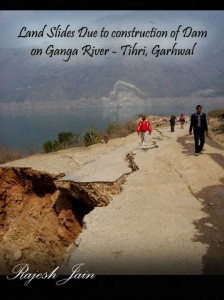
MALC, Ruth Pfau – Flood Relief Pakistan
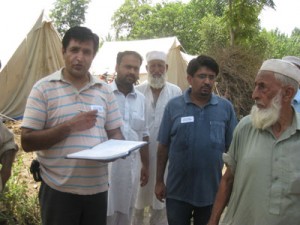
Int. Website of Mary Ward Schools
Dr. Ruth Katherina Martha Pfau (born 1929) is a Pakistani-German nun and a member of the Society of Daughters of the Heart of Mary who has devoted the last 50 years of life to fighting leprosy in Pakistan. In 1996, Pakistan was declared by the World Health Organization to have controlled leprosy, one of the first countries in Asia to achieve this goal. Read More: > HERE <
Pakistan (Urdu: پاکِستان) officially the Islamic Republic of Pakistan (Urdu: اسلامی جمہوریہ پاکِستان) (also the Federation of Pakistan), is a country in South Asia. It has a 1,046-kilometre (650 mi) coastline along the Arabian Sea and Gulf of Oman in the south, is bordered by Afghanistan and Iran in the west, and India in the east and China in the far northeast. Tajikistan also lies very close to Pakistan but is separated by the narrow Wakhan Corridor. Thus, it occupies a crossroads position between South Asia, Central Asia and the Middle East. The region forming modern Pakistan was at the heart of the ancient Indus Valley Civilisation and then later was the recipient of Vedic, Persian, Indo-Greek, Islamic, Turco-Mongol, and Sikh cultures. The area has witnessed invasions and/or settlements by the Indo-Aryans, Persians, Greeks, Arabs, Turks, Afghans, Mongols and the British.
While the Indian independence movement demanded an independent India, the Pakistan Movement (led by Quaid e Azam Muhammad Ali Jinnah of the All-India Muslim League) sought independent states for the majority Muslim populations of the eastern and western regions of British India as well.The British granted independence and also the creation of one Muslim majority state of Pakistan that comprised the provinces of Sindh, North-West Frontier Province, West Punjab, Balochistan and East Bengal. With the adoption of its constitution in 1956, Pakistan became an Islamic republic. In 1971, a civil war in East Pakistan resulted in the creation of Bangladesh. Read More: > HERE <
The German Leprosy and Tuberculosis Relief Association (DAHW), founded in 1957, is a non-profit organisation with headquarters in Würzburg, Germany. It has 62 members. The eight-person Board works on a voluntary basis. For 50 years, DAHW has been helping millions of sick and marginalised people in Africa, Asia, Central and South America. It supports more than 300 relief projects in about 40 countries. DAHW is politically and denominationally independent.
The priorities – The core activity of DAHW is to cure people affected by leprosy and tuberculosis. DAHW takes care also of people who have contracted HIV or who are suffering from AIDS. It combats forgotten diseases such as Buruli ulcer (an infectious disease, similar to leprosy, in Africa, that causes disfigurement, mainly in children), Chagas disease (transmitted by assassin bugs in South and Central America; it causes damage to the nervous system, heart and gut) and leishmaniasis , Kala Azar(carried by phlebotomine sandflies in Asia and Africa; leishmaniasis affects the internal organs, skin or mucous membranes to varying degrees of severity). In places where DAHW has a good infrastructure, it also provides disaster relief, most recently in southern India following the tsunami of 26 December 2004, and in Kashmir, Pakistan, after the earthquake of 8 October 2005.
You Tube Channel DAHW Ruth Pfau Gesten der Menschlichkeit, nicht politische Belehrungen, sind jetzt besonders gefragt“
MALC is working for Leprosy elimination, TB and Blindness control and Community Development for the last 54 years. It is a non profit, non sectarian organization registered under the Societies Act.
A well-knitted network of 157 control centres nationwide mostly in remote areas is functioning in close collaboration with provincial governments and providing services to the patients and communities free of charge. By the grace of Allah SWT and efforts of the team, Leprosy was controlled in 1996. After controlling Leprosy we are now making efforts for its elimination. MALC is also in the front to provide relief and rehabilitation to the poor and needy people affected by natural and man-made calamities and participates actively in the relief, reconstruction and rehabilitation activities in the earthquake and in various floods and draughts relief projects in the country.
The devastating floods in Pakistan – The already food insecure population where 77 million people go hungry in Pakistan while 36% of the population are afflicted by poverty. The situation in Pakistan has developed into a worse case scenario as the government has already declared it as the worst flood in the country’s history. The ravaging flood has moved towards south leaving behind approx 1,500 dead, 900 missing, and innumerable displaced and devastating damage to agriculture, houses and livestock. 250 houses in Kohistan have also been reported completely destroyed. Getting food supply is getting more and more challenging. In mountains due to broken road links, food supply is being transported on mules back and in some areas boats have come into action. Due to scarcity of potable water another emergency has developed for clean drinking water and relief efforts are also directed towards provision of water in containers.
Please donate generously to
MALC Emergency Relief Fund
Account No. 01-7423462-01
at Standard Chartered Bank
and help the poor families especially women and children. MORE…
Acacia Senegal – Sudan’s Miracle Commodity
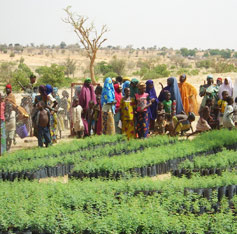
UNHCR – The UN Refugee Agency
http://notonourwatchproject.org/
http://www.fao.org/acacia senegal
Darfur (Arabic: دار فور dÄ�r fūr, lit. „realm of the Fur„) is a region in Sudan. An independent sultanate for several hundred years, it was incorporated into Sudan by Anglo-Egyptian forces. The region is divided into three federal states: West Darfur, South Darfur, and North Darfur which are coordinated by a Transitional Darfur Regional Authority. Because of the War in Darfur waged by the Sudanese government against the non-Arab indigenous population, the region has been in state of humanitarian emergency since 2003. Read more: > HERE <
CASH CROP – The term is used to differentiate from subsistence crops, which are those fed to the producer’s own livestock or grown as food for the producer’s family. In earlier times cash crops were usually only a small (but vital) part of a farm’s total yield, while today, especially in the developed countries, almost all crops are mainly grown for cash. In non-developed nations, cash crops are usually crops which attract demand in more developed nations, and hence have some export value. In many tropical and subtropical areas, jute, coffee, cocoa, sugar cane, bananas, oranges and cotton are common cash crops. In cooler areas, grain crops, oil-yielding crops and some vegetables and herbs are predominate; an example of this is the United States, where cannabis, corn, wheat, soybean are the predominant cash crops. Read more: > HERE <
Not since baking soda has there been a natural commodity that has so many different uses. In the days of the Egyptian Pharaohs, gum arabic was essential to mummification, and since Biblical times, it has been used to maintain the integrity of paints.It can also soothe a worried belly, diarrhea, and constipation, and it’s a key ingredient in soft drinks.
Gum arabic is sap from the branches of Acacia Senegal trees. It’s a natural emulsifier, which means that it can keep together substances which normally would not mix well. Pharmaceutical companies use it to keep medicines from separating into their different ingredients, and a dab of gum arabic makes newspaper ink more cohesive and permanent.
Sudan’s Miracle Commodity – The Acacia Senegal tree grows all over Africa and even on the Indian subcontinent. Most of the world’s gum arabic, however, comes from Sudan, where a thick belt of Acacia Senegal trees stretches from one end of Sudan to the other. Hassan Osman Abdel Nour is the general manager of Sudan’s largest exporter of gum arabic, the Gum Arabic Company.
„The botanist who identified Acacia Senegal first saw it in Senegal, but it turned out to be Acacia Senegal is more common in Sudan than anywhere in the belt. . . It’s an endowment from God. We did nothing about it,“ Nour says.
But extracting gum arabic from thorn-covered Acacia Senegal trees is not easy. When the amber-colored gum begins bubbling up, farm workers handpick chunks from the trees and sometimes get scratched in the process.
Still, Sudan reportedly exports tens of thousands of tons of raw gum arabic ( 60 – 70 % of the World Market) each year, feeding the high global demand. The raw sap is sent to Europe for processing and afterward is disseminated to customers worldwide.
An Industry in Decline – These days, however, business is down. Sudan’s output has dropped to nearly half of what the nation produced in its heyday. As the once abundant belt of Acacia Senegal trees across Sudan shrinks, climate change appears to be one of the culprits. Farmer Adil Basheer remembers better harvests. „In the 1990s—’e’re talking about hectares—one hectare was equivalent to seven and eight bags every two weeks. But nowadays, a hectare cannot bring a half bag or two and a half b“gs.“
The humanitarian crisis in Darfur, where more than 200,000 people have died and more than two million have been displaced, is also having a negative impact on the global gum arabic industry.
The Bush administration calls the conflict „government-sponsored genocide,“ and around the world, the Darfur crisis appears to have sullied Sudan’s reputation to that point that many companies do not want to admit that they buy a Sudanese commodity.
Coca-Cola, which uses gum arabic to keep the sugar from precipitating to the bottom of its sodas, won’t say where it gets the emulsifier. However, company representatives insist they do not buy directly from Sudan. Gum Arabic Company board president Mansour Khalid says otherwise. „They buy processed gum and the processed gum comes from Europe, and Europe buys from Sudan. And you know, the whole thing is silly.“ Staying Afloat – Some Sudanese businessmen believe that widening gum arabic’s appeal internationally is the way forward. Isam Siddiq runs the privately-owned Dar Savannah Gum Arabic processing company. He says manufacturers around the world are trying to create manmade emulsifiers as powerful as gum arabic. Siddiq wants to maintain Sudan’s competitive edge by altering the high-fiber, nonfat emulsifier’s identity from an additive to a food, and he’s ready with his sales pitch:
„America is aware of good health and good food. The American people. And they want it—fiber…The people of the world must really complement each other. We have here fiber, and they have their wheat in America. So Sudan and American could be a good partnership for the benefit of the two nation“. > Related NPR Stories <

http://en.wikipedia.org/wiki/George_clooney Not On Our Watch: Official site for charity founded by George Clooney, Brad Pitt, Matt Damon, Don Cheadle, Jerry Weintraub, David Pressman
ECONOMY – In the last ten years, the Sudanese economy has undergone a drastic change. Instead of been an agriculture-based economy it has turned into an OIL DEPENDEND ECONOMY which in turn has marginalized agriculture. At a time when the world is suffering a food crisis, which is especially afflicting Africa, food production should offer the main productive future for the Sudanese economy.
During the last year, oil revenues represented more than 65% of the Government of National Unity income and more the 90% of the revenue for the Government of South Sudan. In the last four months, oil prices have dropped by around 70%. This is a huge blow. Meanwhile, others sectors of the economy have been weakened by a combination of poor policies followed by the regime in the in the 1990s, and the failure to adapt the non-oil sectors to the impact of the growth in petroleum production. Most of the agricultural sector has been neglected and the economy is now driven by the trading sector and the informal sector, which do not contribute in a major way to creating jobs or generating income in the shape of direct or indirect taxes.
The Sudanese people are still waiting for the peace dividends in shape of economic development which will help in alleviating poverty and raising the standard of living to the majority. At the time when market economy has been tested to the limit in western countries and governments are now nationalizing banks and taking control of key economic sectors, the opposite is happening in Sudan. Instead we have a market dominated by a number of monopolies in most economic sectors, controlled by private individuals who are well-connected to the government. It is not the state that regulates the country’s leading businessmen but a cosy partnership between the two. Read More: > HERE <
The issues of the Darfur war are economical. One of them is due to rice a produce. Farmers fear the construction of dams which are made possible by the strength of the River Nile Waters.
There are places in the world that you can hardly forget like Uganda. This last country is in East Africa and has no opening on the Ocean. So, this makes it a landlocked country that needs to negociate with other countries like Kenya, Tanzania, Somalia and Eritrea to import goods by boat and there is the river Nile on which boats can sail from Cairo. Uganda is a very known country these days because of the conflit in Sudan.
This conflit is known as the Darfur war. Sudan is in the south of Egypte and that is where most of the rice plantation are. Probably thank to the river Nile rice is available in large quantities and it constitutes the major dish of the inhabitants in West Africa. The problem with rice is that it needs to be eaten reasonable other wise you gain weight which is difficult to loose especially if you don’t do a lot of activities.
Rice is a major issue. That is all the question of construction of dams which have said to be destructive for plantation. Rice is sometimes transformed into an alchoolic beverage called sake and it is a produce from Japan. So, one may think that it is important to regulate to make sure that nobody get drunk and is treated in case of fetal alchool syndrom. Actually, the population growth in Japan slowed down in the nineties. Rice grows in water and in the mountains. The well known varieties of rice are from the United States of America and France. Rice is grown in the South of the United States of America in the states of North Carolina and South Carolina. France grows rice on its south west border with Spain a place called Camargue where horses run freely.
Thus, the war in the Darfur is an economical and social problem. Rice is a cereal and can accompany many meals.
If the war continues in the Darfur there will be a food security issue. There is a need to control the cereal markets because they can often be stocked for a long time without preservatives and then some other ingredients can be neglected. This is a tragedy that happened everywhere in the world where populations thought that cereals when in large amount are able to cover all the food intake. It is good to know that there is some for eating and that all is not wasted in alchoolic beverages that can put society in danger because of risk of accidents for example and of wars. Read more in > International Business and Trade <
www.un.org/esa/socdev/unpfii/ The UN Permanent Forum on Indigenous Issues is an advisory body to the Economic and Social Council, with a mandate to discuss indigenous issues related to economic and social development, culture, the environment, education, health and human rights.
www.ethicalconsumer.org – Ethical consumption stresses the role of the consumer in preventing the exploitation of women and children in sweatshop factories overseas and in the U.S. It also considers the environmental costs of production. These costs include the depletion of natural resources, as well as human costs. For example, when a corporation like Unilever, producer of Dove and Lever soaps, Vaseline Intensive Care lotion, Finesse shanpoo, Surf detergent, and Mentadent toothpaste, employs women in the jungle areas of Bihar, India to collect seeds from the sal tree for use in lipstick, the women are deprived of control over what was formerly a resource for their own use.
Consumption in North America today will eventually destroy the environment and is in general hazardous to human health. According to the 1998 United Nations Development Report, 20% of the world’s population consumes 86% of the world’s resources, while the poorest 20% consume only 1.3%. „Not everyone has been invited to the party,“ said U.N. administrator James Gustave. „Expectations have gone global but affluence has not.“
Obviously, consuming less on a personal level in the United States does not directly ensure that people in other parts of the world will immediately be able to meet their basic needs. Changing social patterns of consumption, however, will eventually make a difference. Once individuals begin to understand how their purchases are connected within a global framework, they can demand new, sustainable methods of production. Living with fewer „things“ and assuring that all resources, including labor, are used wisely and fairly will help create a more equitable and ecological world.
By consuming consciously and ethically we can realistically create change. Being aware of current issues in labor exploitation, environmental conservation, and human rights is the best way to spend ethically. Before buying anything ask: Who makes it? Who needs it? and Who profits from it? > Here are some links to informational sites <
- www.radioafrika.net
- www.compassionineconomics.org
- CLIMATE REFUGEE´s http://en.wikipedia.org/wiki/Environmental_migrant
- GUM ACACIA MARKET REPORT: www.agrigum.com
- NY Times Mail Archive: A Tree that supports Sudan´s War by business leaders <
- GOMME SIRUP („junk sweets“) www.amountainofcrushedice.com <
- www.newcrops.uq.edu.au/listing/species_pages_A/Acacia_senegal.htm <
- UN www.fao.org/acacia senegal
- Meet Mind & Life, Compassion in Economics, studies, friends, at fb <
- Meet Human Rights Watch, friends, fans at fb <
- Meet Natural News (independent health news) studies, friends at fb <
- Meet Survival International, friends, fans at fb <
- Meet NO MORE OIL RIGS we want ALTERNATIVE ENERGY SOURCES NOW at fb <
- Meet FAIR TRADE, friends, fans at fb < & www.ethicalconsumer.org
- Meet Peace, Paix, 和平, Salam, Shalom, Pace, Mir, Friede, Paz, Shanti, Heiwa <
